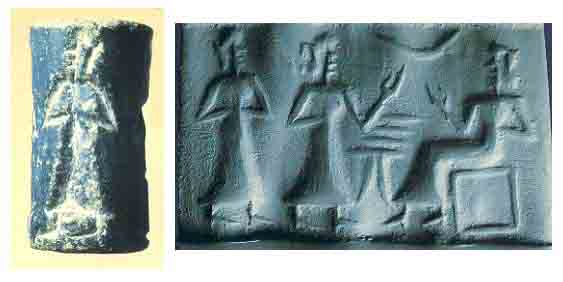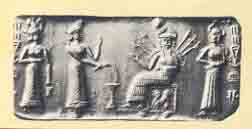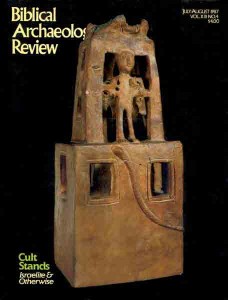Ancient Artists Picture Offerings on Cult Stands
Sidebar to: Cult Stands: A Bewildering Variety of Shapes and Sizes
Cult stands by themselves tell us little about how they were used, but depictions of them in seal impressions, reliefs and paintings tell us a great deal.
Babylonian cylinder seal impressions—created by rolling seals across soft, moist clay—reveal that some stands could be used in more than one way, even by the same people.

Cylindrical stands, for example, were employed by the Babylonians for at least two different kinds of offerings. One seal leaves an impression (above) that shows two worshippers who have stacked three cakes on a cylindrical stand, center, as a cereal offering to the seated deity. Another seal impression (below), this one from the Akkadian period (c. 2360–2180 B.C.) depicts a worshipper, left center, pouring a libation into a cylindrical stand. A second worshipper, far left, carries a pail.

The offering in the latter seal impression is being made before the goddess Ishtar, right center, who raises her arm in greeting as she sits on a throne decorated with crossed lions. A mace, a pole with globes attached, and an axe with a curved blade spring forth from each of her shoulders. Behind her stands a minor goddess.
Already a library member? Log in here.
Institution user? Log in with your IP address.

